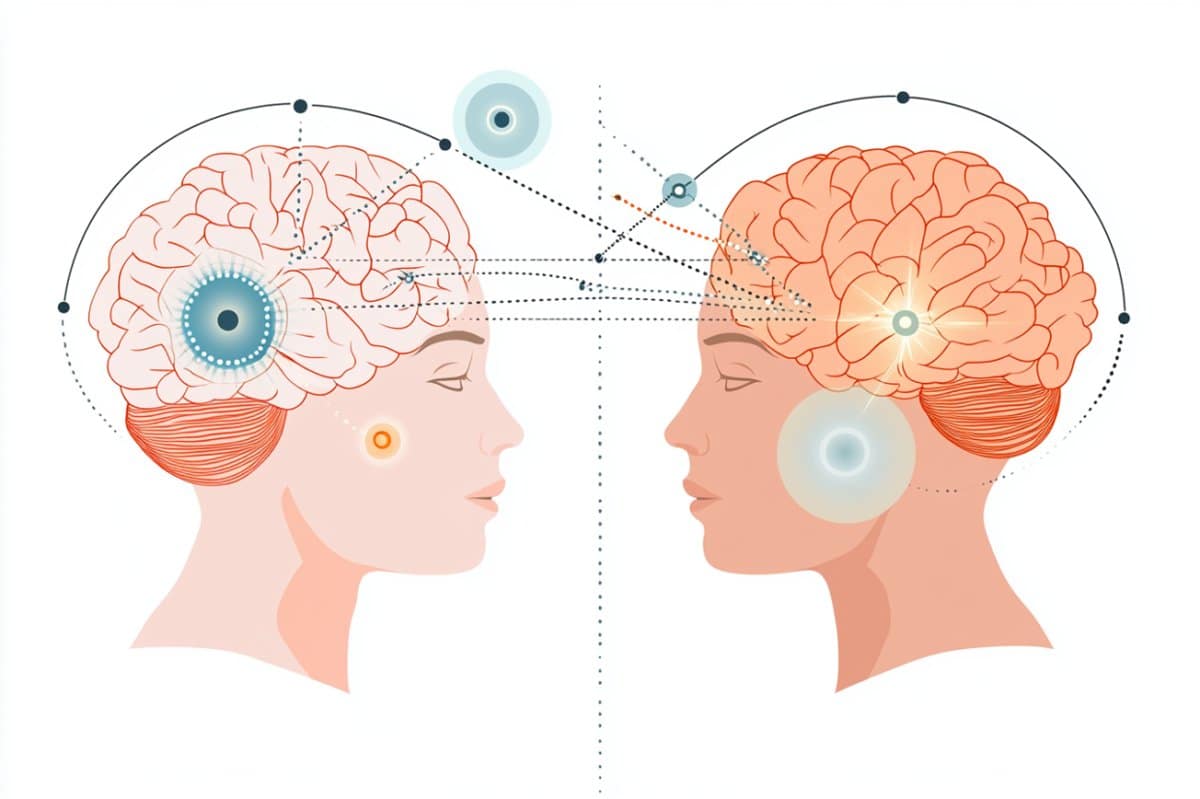Summary: A new study reveals how the brain allocates limited working memory by giving priority items more precise representation. Using fMRI scans, researchers found that the visual cortex encodes all visual information, while the frontal cortex decides which items deserve greater cognitive resources.
Participants remembered the location of high-priority items more accurately than low-priority ones, demonstrating the brain’s selective memory strategy. These findings clarify how the brain juggles multiple thoughts and offer new insights into attention and memory control.
Key Facts:
- Frontal-Visual Interaction: The frontal cortex directs the visual cortex to prioritize memory resources.
- Precision Memory: High-priority items are encoded with greater detail than low-priority ones.
- Dual-Item Decoding: Researchers successfully decoded memory for two simultaneous items—a rare achievement in brain imaging studies.
Source: Ohio State University
A new study offers insight into what is happening in our brains when our working memory must use its limited resources to remember multiple things.
Researchers found that two parts of the brain work together to ensure that more brain resources are given to remember a priority item when a person is juggling more than one item in memory.

The study involved people remembering spatial locations. Imagine seeing two books on different shelves of a cluttered bookcase that was not arranged in any order. How could you remember where they were if you came back a few seconds later?
That’s the job of working memory, which temporarily stores information in your brain for a short period of time, while you process and decide what to do with it, said Hsin-Hung Li, lead author of the study and assistant professor of psychology at The Ohio State University.
In this study, published recently in the journal Science Advances, Li and his colleagues observed activity in the brain while people tried to remember the location of two items.
“Very often when you try to remember multiple things, one item might be more important than another,” Li said.
“What we found is that the more important item is represented in the brain more precisely, while the less important item is given much lower resolution.”
In the bookshelf example, you may remember exactly where on a specific shelf the more important book was located. But you may only know that the less vital book was somewhere in the upper left corner of the bookshelf.
The study involved participants whose brains were scanned in an fMRI machine while they looked at a screen. They were shown two dots, and their goal was to memorize their positions on the screen.
Participants were told it was more important to remember the location of the dot that appeared in one area of the screen – this was the high-priority item.
The two dots appeared on the screen simultaneously for just a half-second. Twelve seconds later the participants were asked where one of the dots had appeared. Usually, they were asked where the high-priority dot had appeared.
But about 30% of the time, they were asked to indicate where the low-priority dot had shown up.
Researchers found that they could see activity in the visual cortex of the brain as the participants tried to memorize the location of the dots, Li said. The high-priority dot was represented more precisely, while the low-priority dot was represented more coarsely, with less resolution.
This tactic by the brain worked. Later, when participants indicated where they had seen the dots on the screen, they placed the high-priority dot closer to its actual location than they did with the low-priority dot.
The researchers found something else when they analyzed the fMRI scans – the frontal cortex of the brain was communicating with the visual cortex, telling it the level of resources it should allocate to remembering the location of each dot.
“With limited memory resources, the frontal cortex was deciding which dot would get more resources, so it would be remembered more precisely,” Li said.
This finding was important because neuroscientists had debated which part of the brain – the frontal cortex or the visual cortex – is responsible for working memory involving visual objects, like the dots in this study.
“We found that they both had a role. The visual cortex creates the visual representation of the two dots that people were trying to remember,” he said.
“But the frontal cortex is making this allocation decision about which one should get more working memory resources and which one should get less.”
Another unique part of this study was the fact the researchers decoded brain activity of people looking at two different things at once for each single trial, something that has rarely been done.
“It is a very useful technique, and I think scientists will use this more in the future. There are so many situations in which people are trying to hold multiple thoughts in their minds and it is very useful to be able decode more than one,” Li said.
Funding: This work was supported by the National Institutes of Health, Alfred P. Sloan Research Fellowship, UCSB Academic Senate Research Grant, and Swartz Foundation Postdoctoral Fellowship.
Li did the research at New York University, where he received his PhD and was a postdoctoral researcher. Other co-authors on the study were Thomas Sprague, a former NYU postdoctoral fellow now at the University of California, Santa Barara; and Aspen Yoo, Wei Ji Ma and Clayton Curtis of NYU.
About this memory research news
Author: Jeff Grabmeier
Source: Ohio State University
Contact: Jeff Grabmeier – Ohio State University
Image: The image is credited to Neuroscience News
Original Research: Open access.
“Neural mechanisms of resource allocation in working memory” by Hsin-Hung Li et al. Science Advances
Abstract
Neural mechanisms of resource allocation in working memory
To mitigate capacity limits of working memory, people allocate resources according to an item’s relevance. However, the neural mechanisms supporting such a critical operation remain unknown.
Here, we developed computational neuroimaging methods to decode and demix neural responses associated with multiple items in working memory with different priorities.
In striate and extrastriate cortex, the gain of neural responses tracked the priority of memoranda.
We decoded higher-priority memoranda with smaller error and lower uncertainty. Moreover, these neural differences predicted behavioral differences in memory prioritization between and within participants.
Trial-wise variability in the magnitude of delay activity in the frontal cortex predicted differences in decoded precision between low- and high-priority items in visual cortex.
These results support a model in which feedback signals broadcast from frontal cortex sculpt the gain of memory representations in the visual cortex according to behavioral relevance, thus identifying a neural mechanism for resource allocation.






